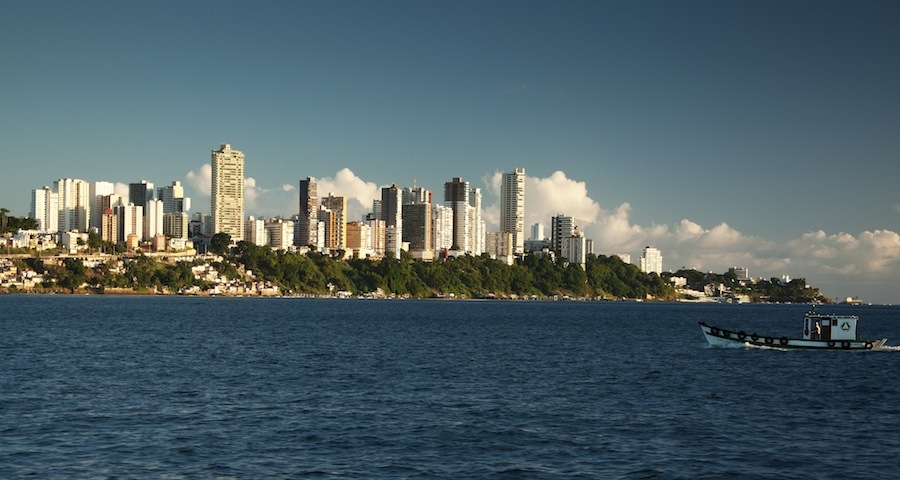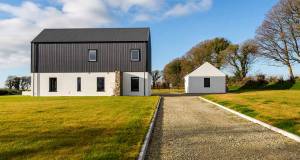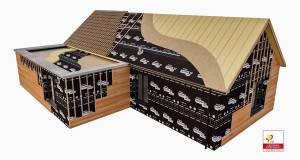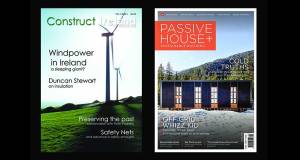
- Blogs
- Posted
PHI publishes research on passive house in tropical climates
The Passive House Institute has published a new study that looks at designing passive buildings for tropical climates. The study concludes that the key design criteria for such buildings include,"a very airtight building envelope, 10 to 15 cm of insulation, solar control glazing, fixed external shades for the windows and ventilation with both heat and energy recovery".
Here's some more detail on the research from the Passive House Institute:
Whether in India, Singapore or Brazil – passive house principles also work in tropical climates. The focus, however, changes: while heating is typically not needed in these climates, efficient cooling and dehumidification methods play an important role. A new study by the Passive House Institute gives concrete design recommendations, showing that, in the passive house of the tropics, energy demand is also drastically reduced. The entire study is now available online on the knowledge platform Passipedia.
The particular challenges of heat, torrential rains and high humidity are analysed in the Passive Houses in Trropical Climates study by investigating dynamic simulations set in three cities: Mumbai, Singapore and Salvador da Bahia. From these examples, authors Dr Jürgen Schnieders and Jessica Grove-Smith derive what is essential for passive house buildings in such climates, namely, a very airtight building envelope, 10 to 15 cm of insulation, solar control glazing, fixed external shades for the windows and ventilation with both heat and energy recovery.
Protection from external moisture loads is crucial to ensuring the longevity of building structures in the tropics. “The key to success is the use of an exterior vapour retarder to shield the building against external moisture loads in combination with active dehumidification of the indoor air,” explains Schnieders. The exterior protection layer prevents moisture from entering the structure, repels driving rain and acts as an airtight shell. “The interior walls should, however, remain diffusion-open,” adds Grove-Smith.
Contrary to the typical advice for Central European climates, interior insulation in the tropics is recommended as a suitable solution. Such insulation not only has a positive effect on the moisture balance of the structure, it facilitates the easy installation of exterior shading systems and allows for deeper window jambs. In this way, the amount of heat from the sun that enters the building can be reduced without reducing day-lighting. So as not to counteract the effect of the cooling system, internal heat loads should also be reduced. This is accomplished through the use of efficient appliances as well as by locating hot water tanks and ductwork outside the thermal building envelope.
In a previous study conducted with the help of Rongen Architects in 2012, the Passive House Institute investigated the application of the passive house concept outside of Central Europe. In the Passive Houses for Different Climate Zones study, technical solutions and the effect of design parameters on a building’s energy balance was shown through dynamic simulations of example buildings in the extreme climates of Yekaterinburg, Tokyo, Shanghai, Las Vegas and Dubai. The new study, commissioned by Saint-Gobain, demonstrates that hot and humid climates are no obstacle for Passive House. As in Central Europe, however, quality assurance, both in design and on the construction site, is crucial.
Passipedia is an online knowledge reference in which home builders, designers and other interested parties can quickly and comfortably find information on Passive House themes. An overview of key findings of Passive Houses in tropical climates can be found on Passipedia, free of charge to the public. Members of the International Passive House Association (iPHA) may access the complete study in Passipedia’s member area.
Related items
-
 Why airtightness, moisture and ventilation matter for passive house
Why airtightness, moisture and ventilation matter for passive house -
 Airtight delight
Airtight delight -
 Partel’s airtight membranes now certified for passive house construction
Partel’s airtight membranes now certified for passive house construction -
 ProAir pioneers with EPDs for ventilation systems
ProAir pioneers with EPDs for ventilation systems -
 Big picture - New Zealand rural passive home
Big picture - New Zealand rural passive home -
 Podcast: what we've learned from 20 years in green building mags
Podcast: what we've learned from 20 years in green building mags

